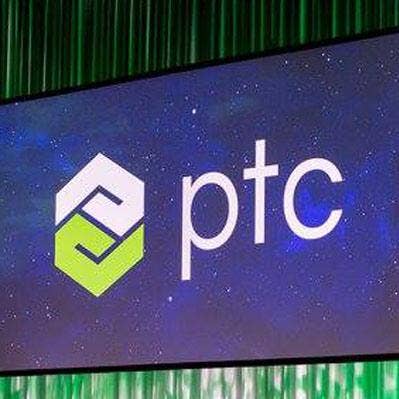PTC Readies SaaS Offensive For Its CAD, PLM Applications
Solution providers are excited by PTC’s push to develop SaaS editions of its popular Creo and Windchill software, even as they await details about the vendor’s SaaS channel strategy.

PTC Channel Chief Stuart Heavyside
PTC is gearing up to begin releasing SaaS-based editions of its software portfolio this fall in a transformation of the company’s product line that will have a significant impact on how it works with the channel.
The company’s Windchill product lifecycle management (PLM) application will be first out of the gate as a SaaS offering, followed next by its Creo CAD/CAM/CAE offering, with other PTC product lines set to follow.
“PTC has been leading the way with SaaS,” said Stuart Heavyside, senior vice president and channel chief at PTC, in an interview with CRN. “The market’s going to go SaaS, so if we don‘t make a bold move then our partners are going to lose out to competitors doing that. The whole world is going to SaaS. So we’re really following the market. But we‘re the first to get there in our industry.”
[Related: PTC Acquiring Intland For $280M To Boost App ManPTC Acquiring Intland For $280M To Boost App Management ]
PTC is currently developing a partner program “as fast as humanly possible” that will spell out just how solution providers will work with the new SaaS applications, he said. While it’s too early to provide details about what the program will include or what kind of resources are being invested in the effort, Heavyside said the company has been carefully working through business and financial elements, rules of engagement and technical issues about partners’ ability to access and work with customer implementations of the multi-tenant applications.
“We‘ve essentially spent the last six months saying ‘OK, how are we introducing this? How will the evolution happen? What are the things we need to do to help enable [partners], how do we work together so that we can all move forward into the SaaS world and be successful?’” said Heavyside, who took over as PTC channel chief in February.
Solution providers who work with PTC are excited by the company’s SaaS plans. But with such a significant change comes anticipated challenges.
PTC partners interviewed by CRN said they expect some disruptions as they adopt a SaaS business model and have many questions about just how channel partners will work with the new SaaS offerings.
“This is a good fit for our organization,” said Helmut Hass, CEO and owner of Inneo Solutions, a PTC platinum partner based in Ellwangen, Germany, noting that his company already works with cloud applications. “There are a lot of question marks [and] many questions open, but we have to trust and rely on PTC that those questions will be answered soon,” he said.
Heavyside said his and PTC’s goal is to make the move to SaaS as smooth as possible for partners.
“Our goal here is for our partners to be successful in the transition to SaaS,” Heavyside said. “It‘s really that simple. We’re spending all of our time and energy doing that.”

CAD/CAM Roots
Boston-based PTC got its start developing CAD/CAM tools used by manufacturers to design products—everything from industrial components, to automobiles, to consumer appliances. Today PTC’s Creo software is the company’s flagship CAD/CAM toolset.
But its broad application portfolio also includes the Windchill PLM system, ThingWorx industrial IoT platform and Vuforia augmented reality software. The value proposition is that the offerings provide a continuous “digital thread” of software tools that customers use to design, build, maintain and service products and gain feedback on product usage.
Those applications today are largely implemented and used on-premises by customers. The PTC product lineup also includes Onshape, a SaaS-based product development toolset PTC acquired in November 2019, and Arena, a SaaS-based PLM platform PTC bought in January 2021.
PTC has been signaling the company’s SaaS plans to customers and partners for nearly a year. CEO James Heppelmann has provided the investment community with a SaaS roadmap. And the front page of the company’s website currently introduces Windchill+, the SaaS edition of the PLM platform. The actual launch for Windchill+ and Creo+, the SaaS version of that product, is expected shortly after the start of PTC’s fiscal 2023, which begins on Oct. 1, 2022.
Multi-tenant SaaS applications, of course, have been around since Salesforce began offering its CRM application in 2000. Since then, SaaS has become a standard architecture for applications deployed to large numbers of people throughout a business or organization, including HR and CRM systems, collaboration tools and personal productivity applications like Microsoft Office 365.
The global Software-as-a-Service market is expected to grow from $212.2 billion in 2021 to $240.6 billion this year, according to a ResearchandMarkets forecast, and grow at a 11.7 percent CAGR to $374.5 billion in 2026.
SaaS adoption, however, has been slower for complex software like PTC’s products, which are specialized and generally used by fewer people in an organization.
“It‘s just the nature of the industry. We’re not selling software that‘s a form on a webpage. We’re [building] engineering software: the complexity, the math, the physics that‘s behind our software is so complex, you couldn’t just turn a switch and adjust. So the market just takes longer to get there,” Heavyside said.

The SaaS Sell
Today about one-third of PTC’s annual recurring revenue comes through the channel, according to Heavyside. PTC expects revenue of around $1.9 billion in the current fiscal year that ends Sept. 30.
PTC products sold through partners skew heavily toward Creo and Windchill with partners reselling the applications, handling fulfillment, and providing a wide range of implementation, integration and configuration services; custom applications that run on the PTC platform; and high-level consulting services around product design and business transformation.
PTC’s channel sales are growing, and the transition to SaaS will accelerate that growth, Heavyside said. “That‘s going to drive a huge amount of revenue, of which the channel will continue to take more of it.”
The channel executive touts the coming SaaS evolution as a significant opportunity for the channel because, given the economics of SaaS, partners can earn more dollars for the same sales efforts for on-premises software.
Customers don’t need to buy servers and other hardware for SaaS applications, and spending for administration and customization is lower. That frees up money customers can spend on other solution provider services. Partners “can drive those services and drive more revenue for themselves. And, of course, for PTC,” Heavyside said.
“What we need to help our partners do is evolve into the business model that allows them to provide the services that make more of an impact in the SaaS world,” he said.
Heavyside said the on-premises PLM software market is about $8 billion and the market for SaaS PLM could be twice that.
PTC’s drive toward SaaS will develop right alongside its legacy software business, as there are no plans to discontinue the on-premises versions of Windchill, Creo and other PTC products, according to Heavyside.

Partners Seeking SaaS Details
Thane Hathaway, president and CEO at EAC Product Development Solutions, a leading PTC partner, recognizes the potential opportunities of being able to offer SaaS versions of PTC’s software. He’s eager to hear what kinds of partner revenue options and financial incentives PTC plans to provide around the SaaS products.
“My business model requires software recurring revenue,” Hathaway said in an interview with CRN, saying that he’s counting on generating an on-going revenue stream from SaaS subscription sales and revewals, just as he does now from on-premises software. “The money that we make on margin, from recurring subscription margin, pays for everything else. It pays for our marketing, pays for the development of our own software solutions, it pays for everything. So it would be a huge change for us not to have that, and it‘d be a very big change for my salesforce. My consulting services [alone] don’t pay for the sales force, for example.”
EAC, based in Minneapolis, Minn., has been a PTC partner since 2001. The solution provider works with most of the company’s products—including the Onshape software-as-a-service application—which altogether account for about 98 percent of the company’s business, Hathaway said. In addition to reselling the products, EAC offers business process and product development consulting services.
Inneo, meanwhile, has been a PTC partner since 1989. CEO Haas described the partnership as “a really close and, I must say, today, a good working relationship.” In addition to reselling PTC software, the company offers implementation, integration and training services. And because Inneo already works with Onshape, provides cloud-hosted Creo and Windchill applications, and develops its own cloud applications, Haas understands the value of SaaS.
“We do believe in PTC’s strategy,” Haas said, noting the potential mid- and long-term market potential for SaaS. “There is a market for CAD [applications] in the cloud. We learned this from our own cloud activity.”
But like Hathaway at EAC, Haas is anxiously awaiting details from PTC about just how partners will sell the SaaS applications and what recuring revenue opportunities and incentives will be offered. “We are selling—that‘s where we are coming from [as a] value added reseller. That is our heritage, and we still need product margin, of course,” he said.
Hathaway said he is also eager to hear how PTC plans to provide partners with access to SaaS applications being used by customers in order to provide technical services like maintenance support and configuration as they now do with on-premises applications.
“How would we do that unless we have access to [the SaaS applications]? The business model can‘t be: ‘Hey, we’re going to have PTC make a configuration change for you, and we‘ll get back to you when it’s done.’ That‘s not a model that’s going to work. They have to find a way to give us access to the platform.
And exactly how soon after launch the PTC channel can begin selling the SaaS applications remains a question mark. One partner said that during a recent meeting at PTC he was told that while the first SaaS applications would go live by the end of this year, they probably won’t be available to channel partners until sometime in 2023, possibly around mid-year.

Heavyside’s Crucial Role
Heavyside is charged with providing answers to these questions. Prior to taking over the channel chief role six months ago he served as PTC’s senior vice president of global sales for Onshape, a job he took in December 2019, just one month after PTC’s Onshape acquisition. Heavyside’s resume also includes a 10-month stint as chief revenue officer at Jama Software and, prior to that, more than eight years at PTC in various sales management posts. He also spent several years working at SolidWorks, a Dassault Systemes-owned PTC competitor in the CAD/CAE software arena.
The channel chief cites his time working with Onshape as providing him with the insight needed to help PTC partners make the SaaS transition.
“I‘ve had my head deep in SaaS for three years now. And so this, hopefully, brings that experience to bear as we try to make the transition here with channel partners with Creo and Windchill, ThingWorx and Vuforia,” Heavyside told CRN, listing the PTC applications for which SaaS editions are planned.
“I think they‘re excited for [this], the partners that I’ve spoken to,” he said. “I‘m very confident that our partners are going to do well with this, even though we haven’t released thousands of details, because we‘re [still] working on it. We’re talking regularly with our partners about how could this evolve and how do they participate, how do they make more revenue. All those things.”
The channel chief also said that PTC’s top management is deeply involved in making sure the changes aren’t detrimental to the company’s partners. “I will tell you that [CEO] Jim Heppelmann is the biggest champion of the channel inside of PTC,” Heavyside said.
Solution providers generally give PTC good overall grades for working with the channel.
“I love working with PTC,” EAC’s Hathaway said, citing the market opportunity, the company’s products and the PTC partner program. “Their technology is great.” He noted that there has been turnover in the company’s channel leadership in recent years, “and that can lead to different challenges. But overall, we‘ve had a lot of success—20-plus years of success—working with PTC.”
A top executive at another large PTC partner echoed the same sentiment. “We have a very good relationship with them,” said Dwight Griffith, president of Phoenix-based TriStar, one of PTC’s biggest partners. TriStar is almost entirely focused on PTC, reselling the Creo and Windchill products and providing a range of services around them, from implementation, integration and training to consulting services for improving product development, design and manufacturing processes. The company also develops add-on products for PTC platforms.
But Griffith, who himself worked at PTC for nearly 11 years, says the company still has an enterprise-customer, direct-sales culture overall that occasionally gets in the way.
“They‘re working hard at improving. It’s still a direct sales organization, for the most part, but operationally they‘ve gotten better than they were five years ago. They’re not great, they‘re not perfect, but neither are we. We work through a lot of the operational issues they have, whether it’s program related, whether it‘s processing orders, those types of things. They are getting better there, but still a long way to go. Predominantly it’s still a direct sales company trying to build out a partner community to support their SMB customers.”

Tricky Transitions
Multiple channel partners, in interviews with CRN, noted that business and technical transitions such as the move to SaaS can be challenging to navigate for the channel.
Hathaway said that with the soon-to-launch SaaS applications, EAC will lose some business around on-premises software installation, migrations and configuration. But he described those services as lower value. “As PTC moves to SaaS, it‘s going to allow us to focus on higher-level, higher-value service delivery around organizational change and process consulting and things like that, which I think is good. That’s good for us. We do that anyway. But it‘s going to force us to move upstream, I think, with our services over time.”
With the move to SaaS, TriStar will likely lose some revenue from what Griffith calls “the transactional services bucket,” including implementation and upgrade services. His company has focused on building out its higher-value consulting services and has even been hiring consultants with vertical industry expertise.
“The strategic services that we’re getting into now will always be there, I think, because we’re really talking about process, not so much tools,” Griffith said.
While TriStar will fully embrace the SaaS products, Griffith thinks the overall evolution of PTC’s customer base from on-premises to SaaS will be slow. He says PTC has told him that by 2030 it is projecting only 20 percent to 30 percent of customers will have migrated to SaaS. He notes that TriStar already provides cloud hosting services around PTC applications for customers, so his company has cloud experience.
Working Through A Difficult Transition
Solution providers interviewed for this story recalled another challenging evolution: the difficulties that they experienced between 2016 and 2019 when PTC changed its business model from perpetual licenses to subscription licenses. That transition, while ultimately successful, led to short-term sales declines for many partners because of the loss of up-front perpetual license revenue.
“We worked with PTC and we all understood it‘s about a three-year transition,” Hathaway said. “I would say it was difficult and tight. PTC did some things around rebates and other ways to help partners through that, which I think was helpful.”
“We had a little chasm to cross financially, so we decided to put more focus on the service side of our business and really transform our service engagements with customers,” TriStar’s Griffith said. “[We put] more [focus] on the business process reengineering of how companies design and manufacture their products … putting together a multi-year PLM roadmap. So that‘s where we are today.”
But solution providers say the transition to subscription revenue has paid off, lowering customer acquisition costs, reducing customer churn and boosting the lifetime value of customers. “I believe that this model is much better for my company long-term, so I was all for that transition,” Hathaway said.
Channel chief Heavyside also points to the experience of the perpetual-to-subscription license transition as a sign of how the move to SaaS can succeed. “This next wave of transition should drive even more revenue, even more happier customers. Generally speaking, [partner] feedback has been positive.”